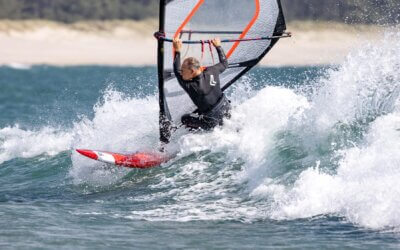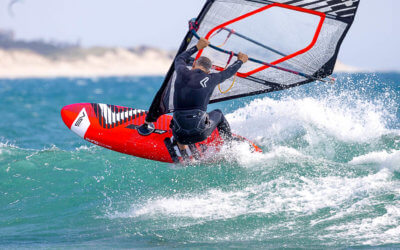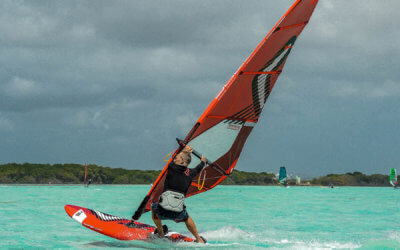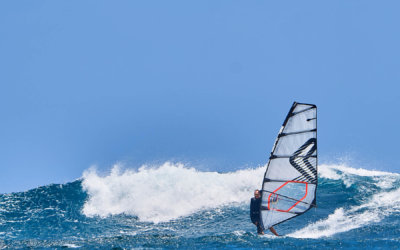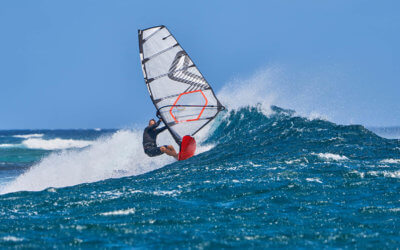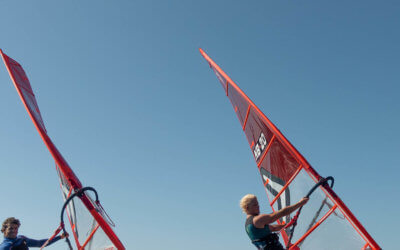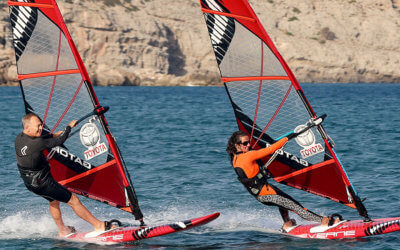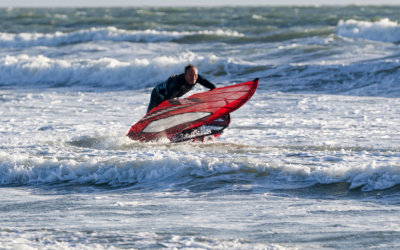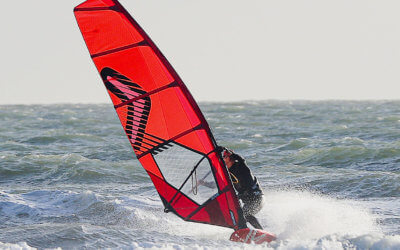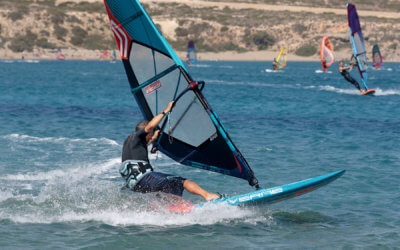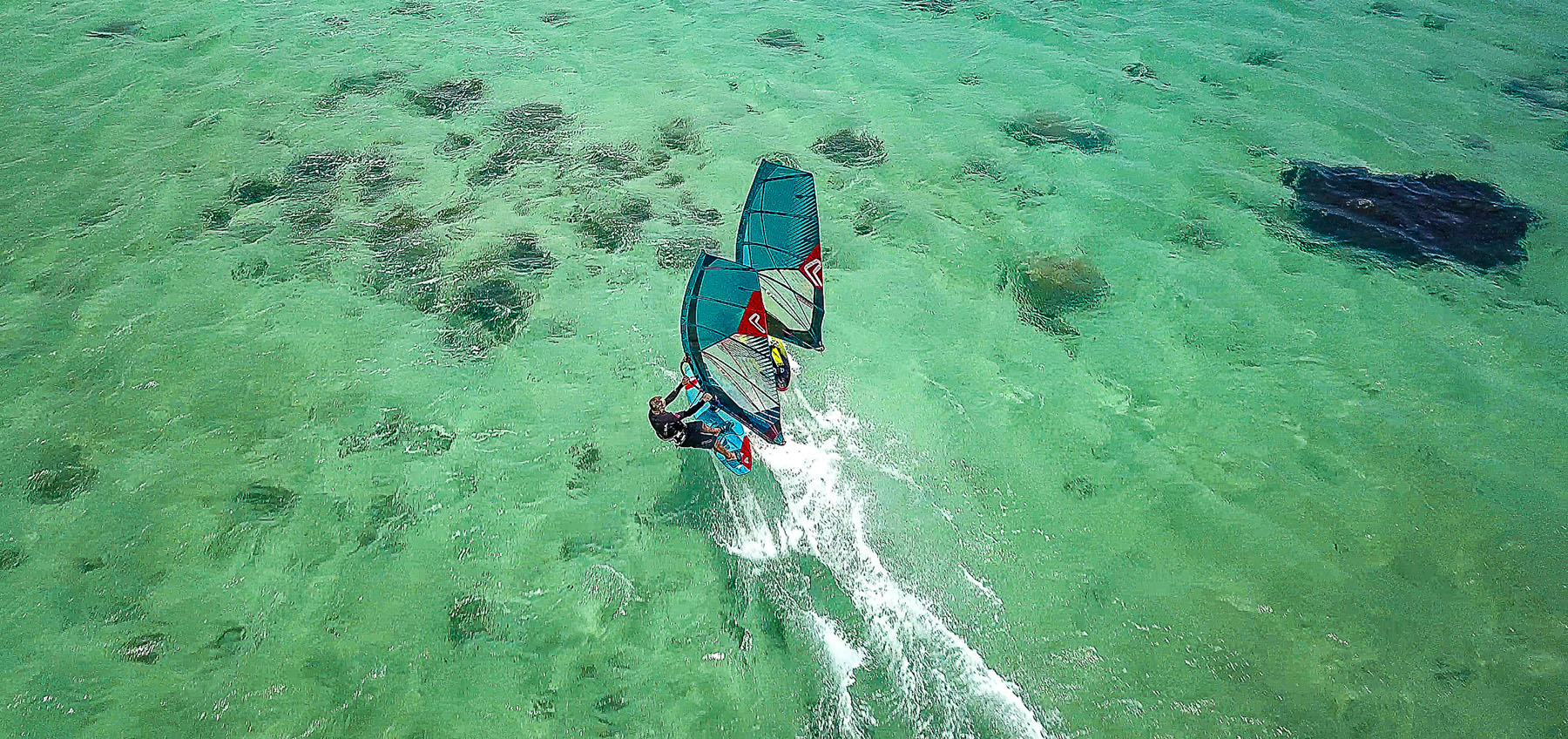
Stay in Control!
Welcome back to our quest to make you a better sailor and help you get more out of your Severne kit. After getting you going in our Severne Windwise Early Planing feature, Simon Bornhoft is back to help you gain, keep and not lose control!
Photos: Windwise & Kate Ocean
Be A Board Master!
Whether you’re moving down onto shorter lower volume boards for the first time, mastering full blasting conditions or wanting that extra control when the water cuts up, try accentuating these core Windwise skills to help you get the very best out of your time on the water and, of course, that beautiful Dyno too!
Lower volume and shorter boards can be quite sensitive at low speeds and especially lively at high speeds in rougher conditions when they accelerate faster and respond instantly to foot pressure and body movement. ‘Blasting Control’ is all down to your ‘stance’, which impacts how you exaggerate specific forces and action with your body. If you do have a Dyno, then we’ve made this even easier for you, as the board is designed and is proven to cope with the most varied and toughest of situations and assist you massively. When I’m coaching, so many clients jump on my Dyno and just love the ease of the board in the roughest of conditions. But, it doesn’t sail itself, so you’re still going to need to have a few skills to get the most out of your sessions. Here are some very common issues that everyone has to deal with as they progress through the sport.
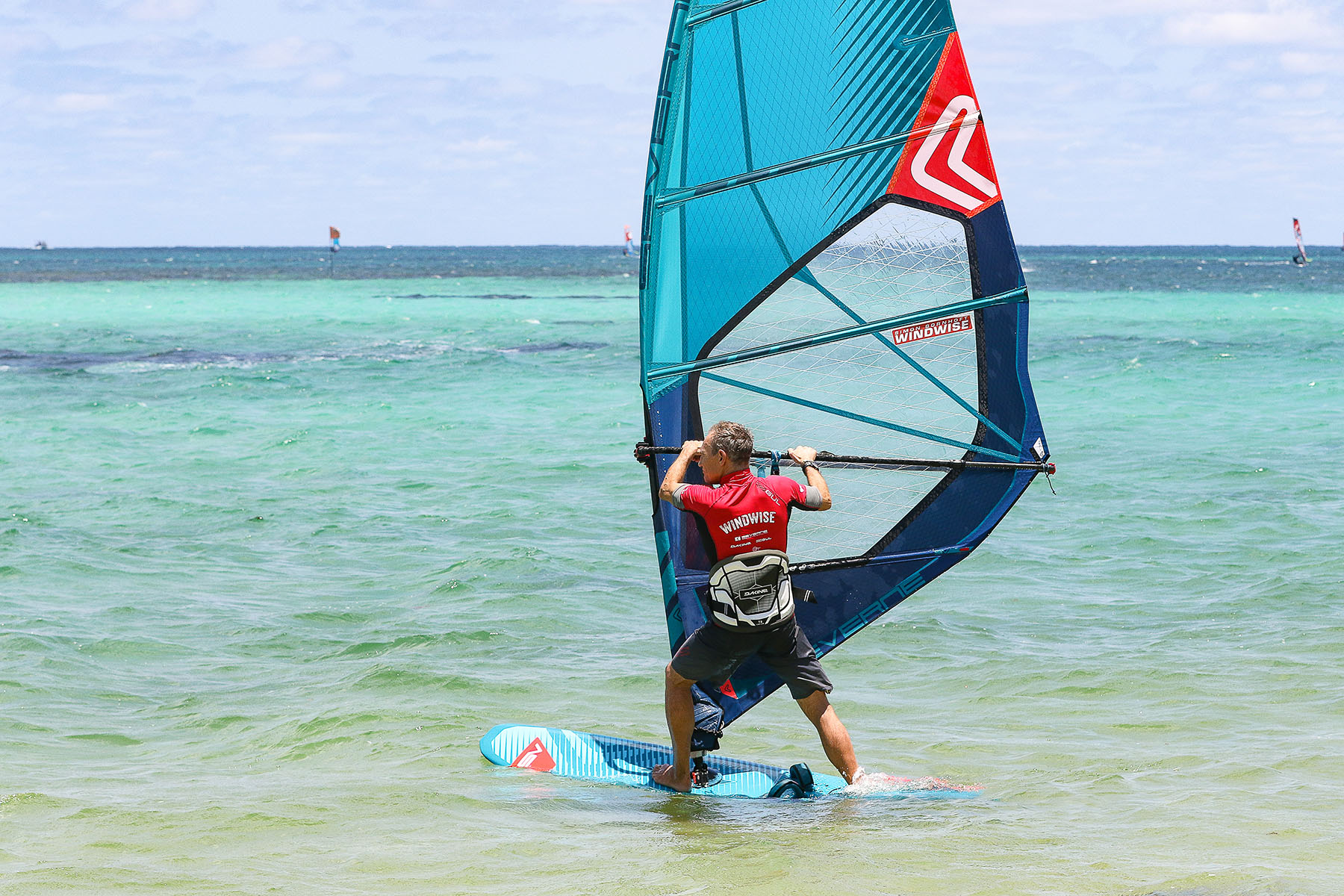
Q: Do you keep luffing, spinning into the wind or sinking the tail?
This is because commonly due to excessive pressure on the rear leg and insufficient weight in the harness to sheet in and keep the power driving through the mast base. Nine times out of ten, this is because you’re destroying that all important ‘7’ stance by over weighting the rear leg, pulling on or bending the mast arm and front leg too much.
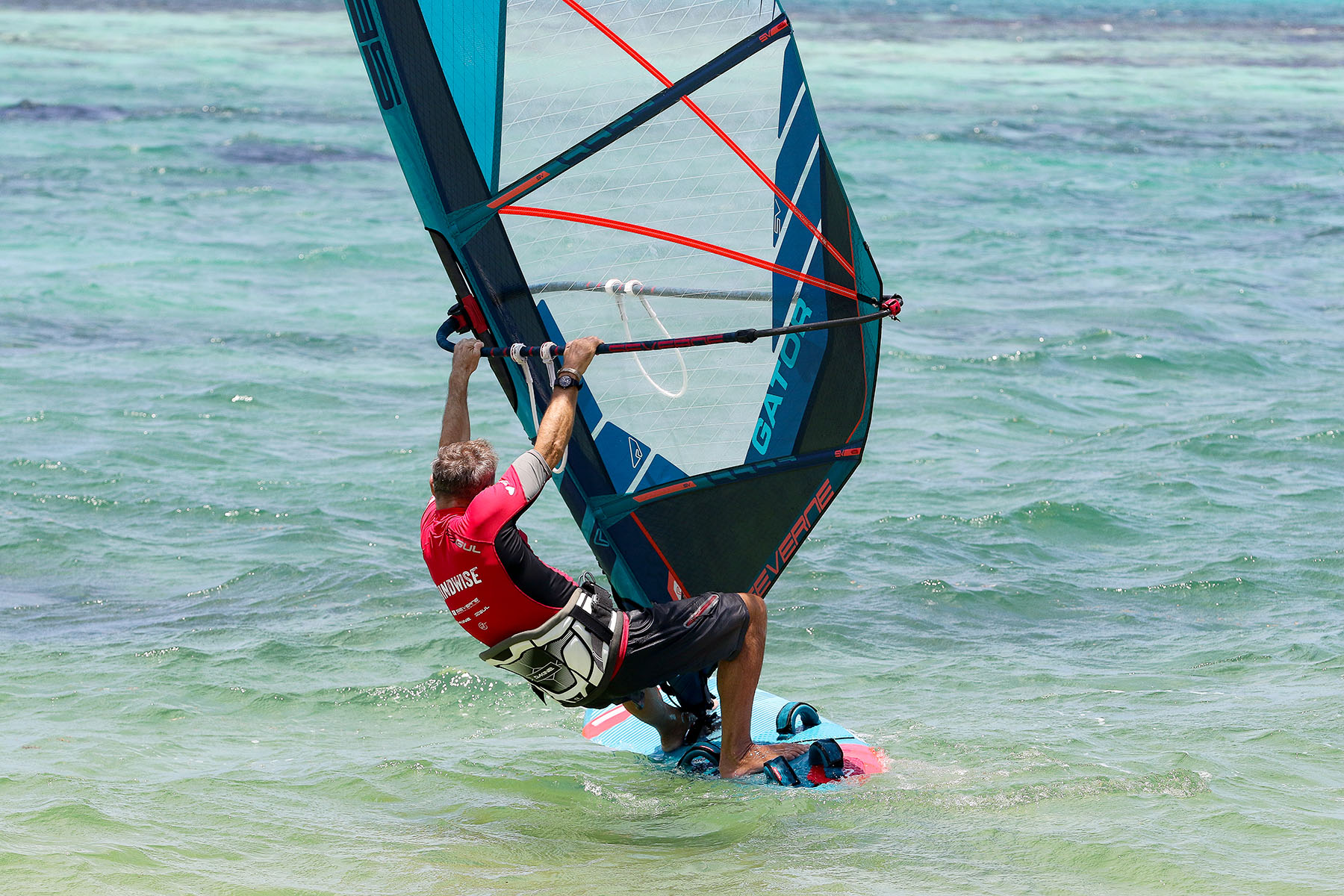
Sunken 7 Drop & PUSH
To gain control at lower speeds in stronger winds, always head upwind first. This helps settle the board and sheet the rig in before you gradually bear away to get planing (see our last SBW feature on early planing if you struggle with that). Aim to be more dynamic and outboard in your ‘Sunken 7’ stance to put a downward force through the boom and sheet the rig in! If you also push away through an extended front leg, whilst flexing the rear leg, you’ll keep that board tracking on a straighter line. So hang that ‘7’ low, outboard and trust that harness, not your hands!
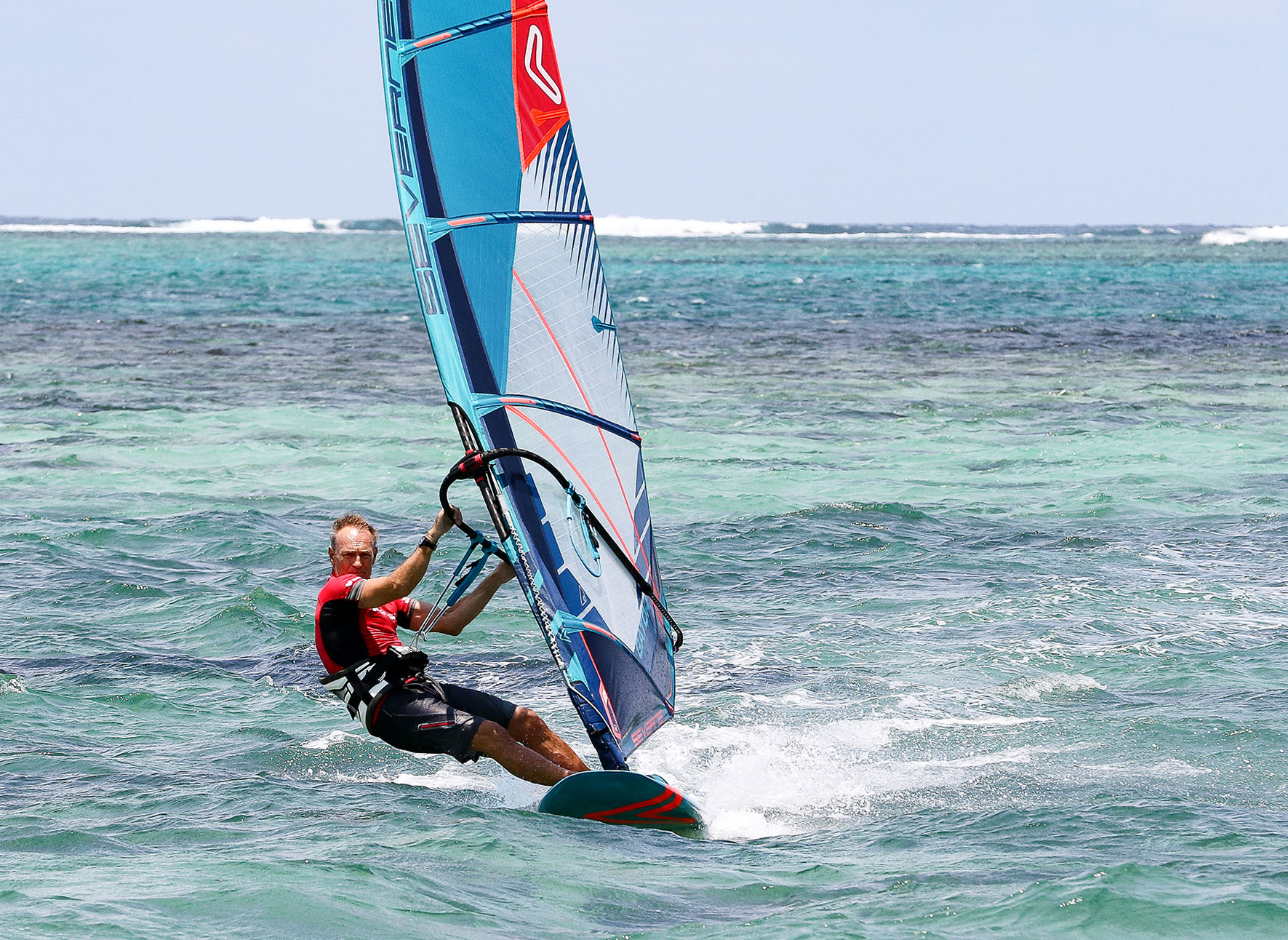
Want Brilliant Blasting Control?
When the wind really increases, the water state cuts up or you’re fully powered traveling at attention seeking speeds, rather than ‘dropping and pushing’ we ‘drop and dig’ in that ‘sunken 7’ to lock the board flat, sheet the sail in and maximize your comfort and control. Here’s how…
Harness & Hips
Push out with both legs and sink low into your harness – more than you ever thought possible.
Try sucking your core muscles in, down and back as if trying to force your belly button out the back of your harness. This will maximize the pressure down through the harness line. Sink and be heavy!
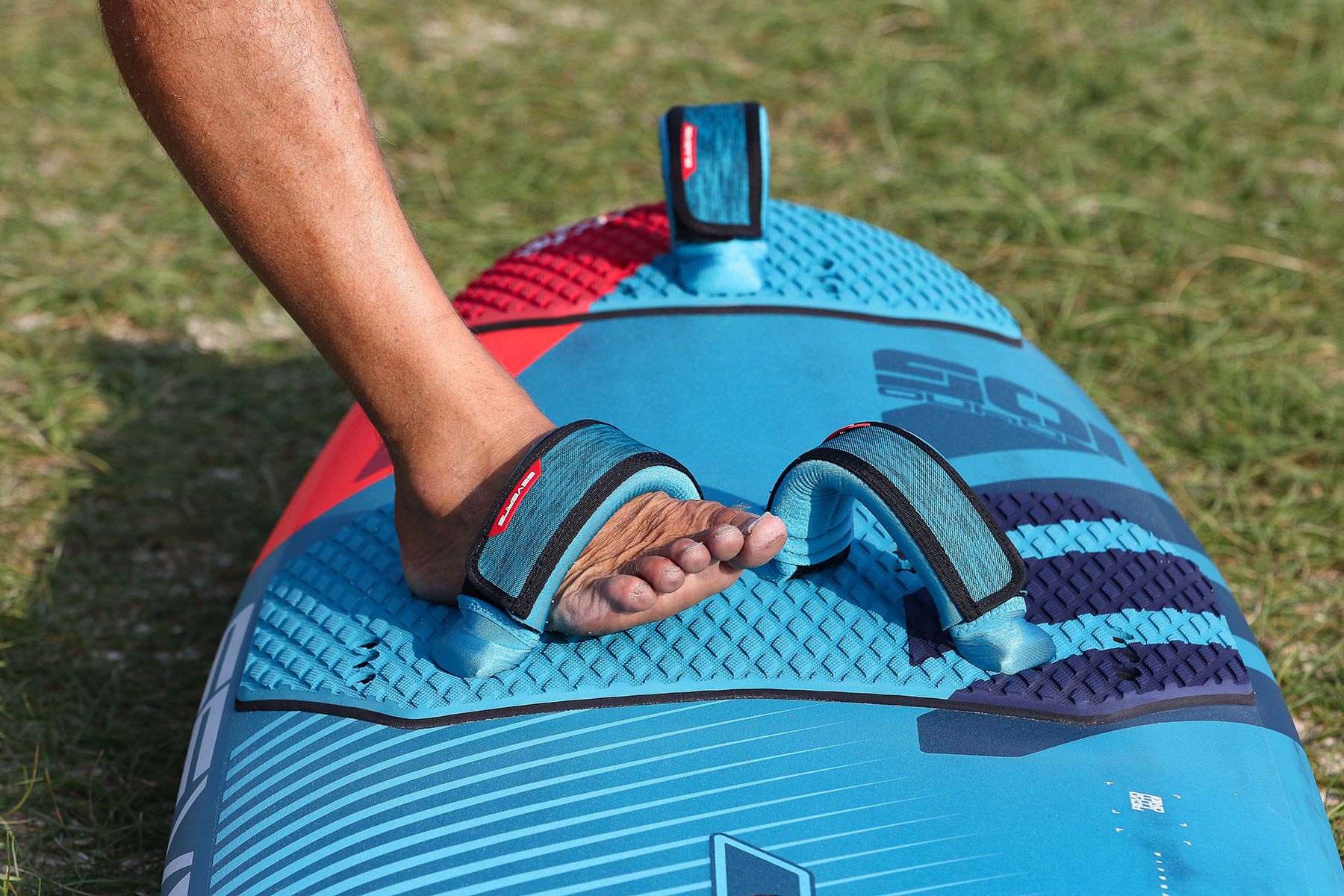
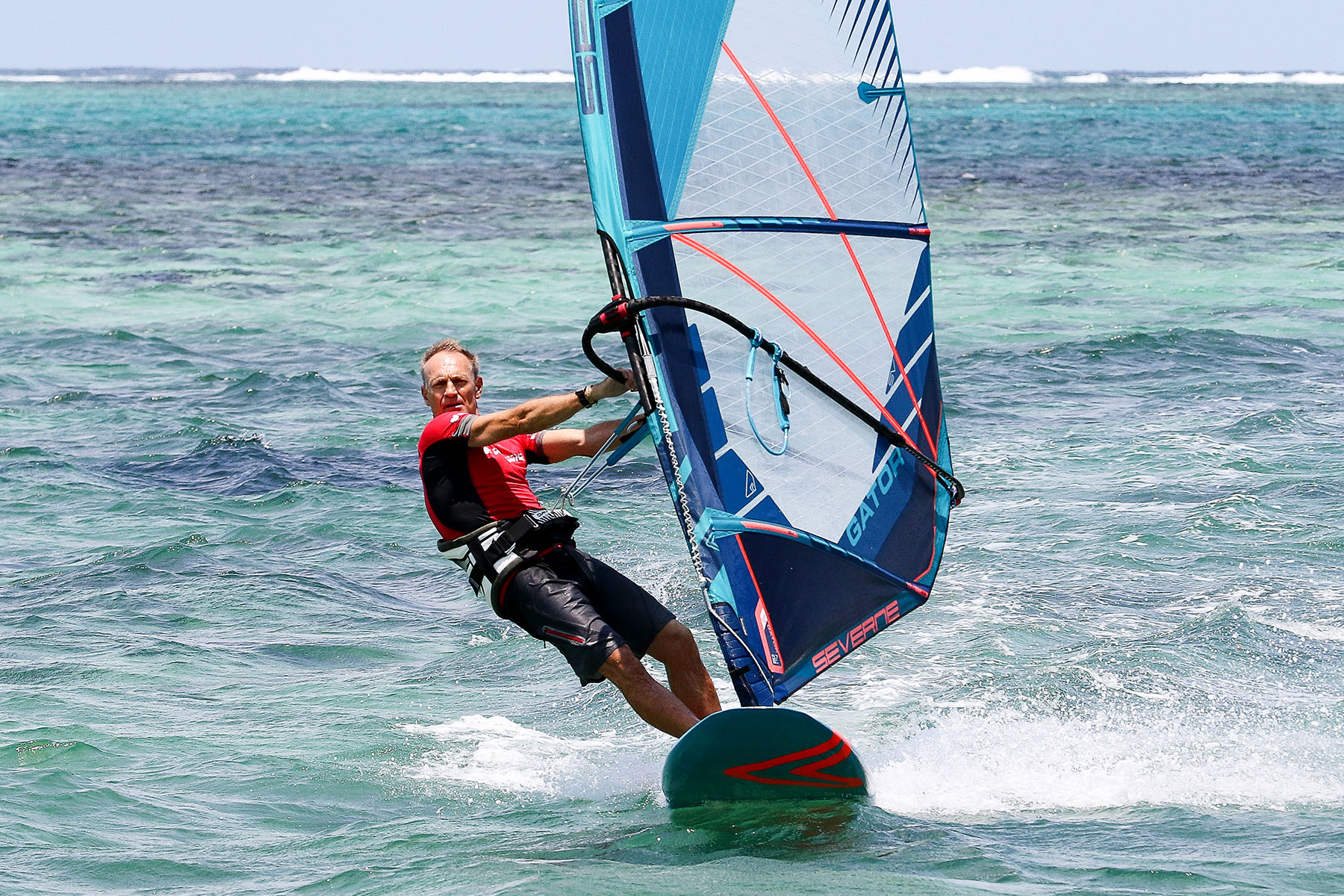
Heels
Extend the front leg, CURL the toes up on the front foot and DIG that HEEL down.
Don’t underestimate the value of this ‘tip’!
Any good racer will tell you how important that front foot is to lock the windward rail down. Simultaneously, and as a shock absorber, flex your rear leg as soon as you encounter excessive speed, chop and especially if you get wanted or unwanted air.
Hands
Trust that harness to avoid over pulling on the arms, so keep the elbows down.
Think hips and legs, not arms and hands!
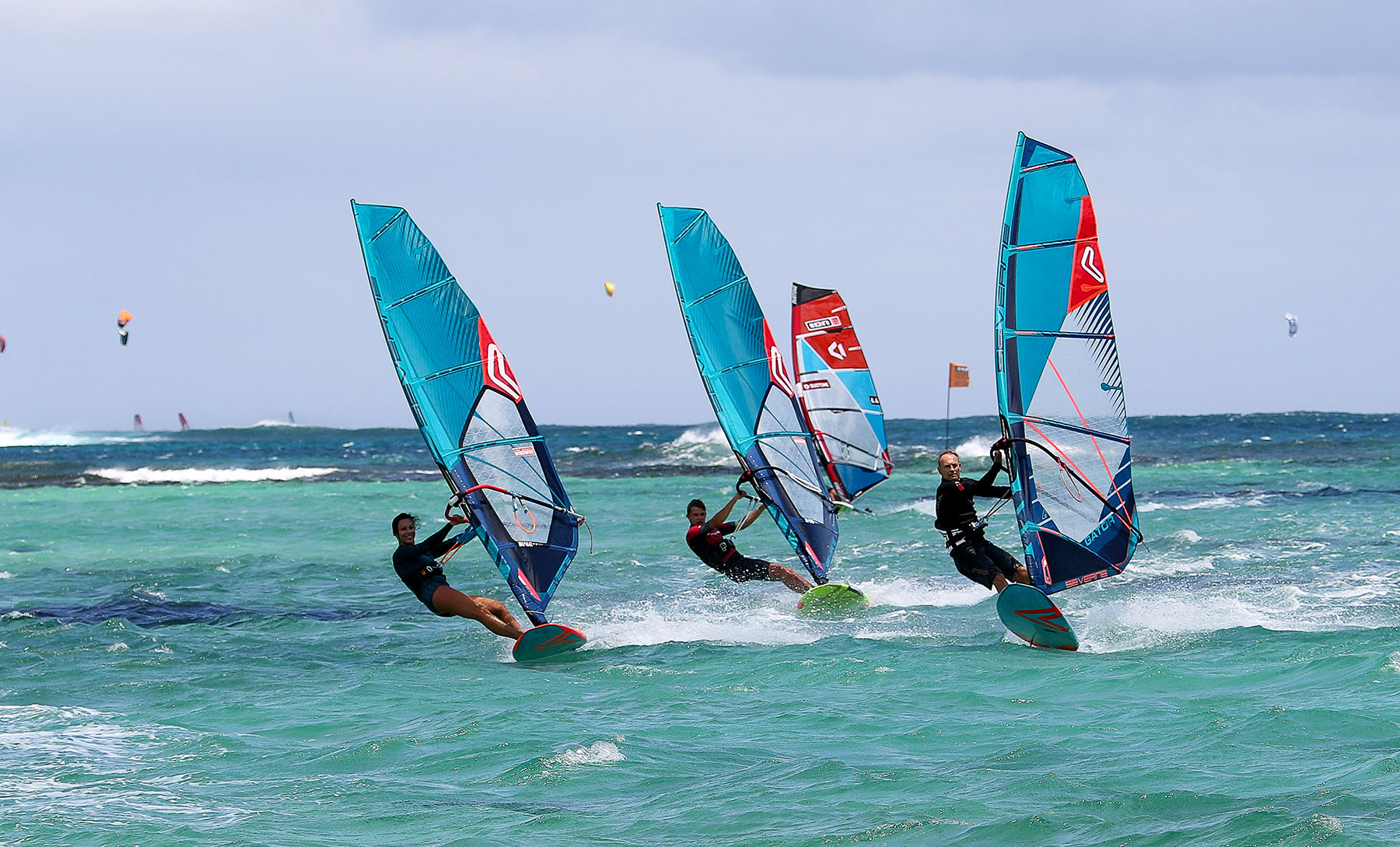
Losing control
Here I stand up and destroy the outboard ‘Sunken 7’ mantra and the board lifts and the sail sheets out, which is sub optimal to say the least compared to the Windwise crew around me sinking those ‘7’s!
Blasting Problems To Overcome
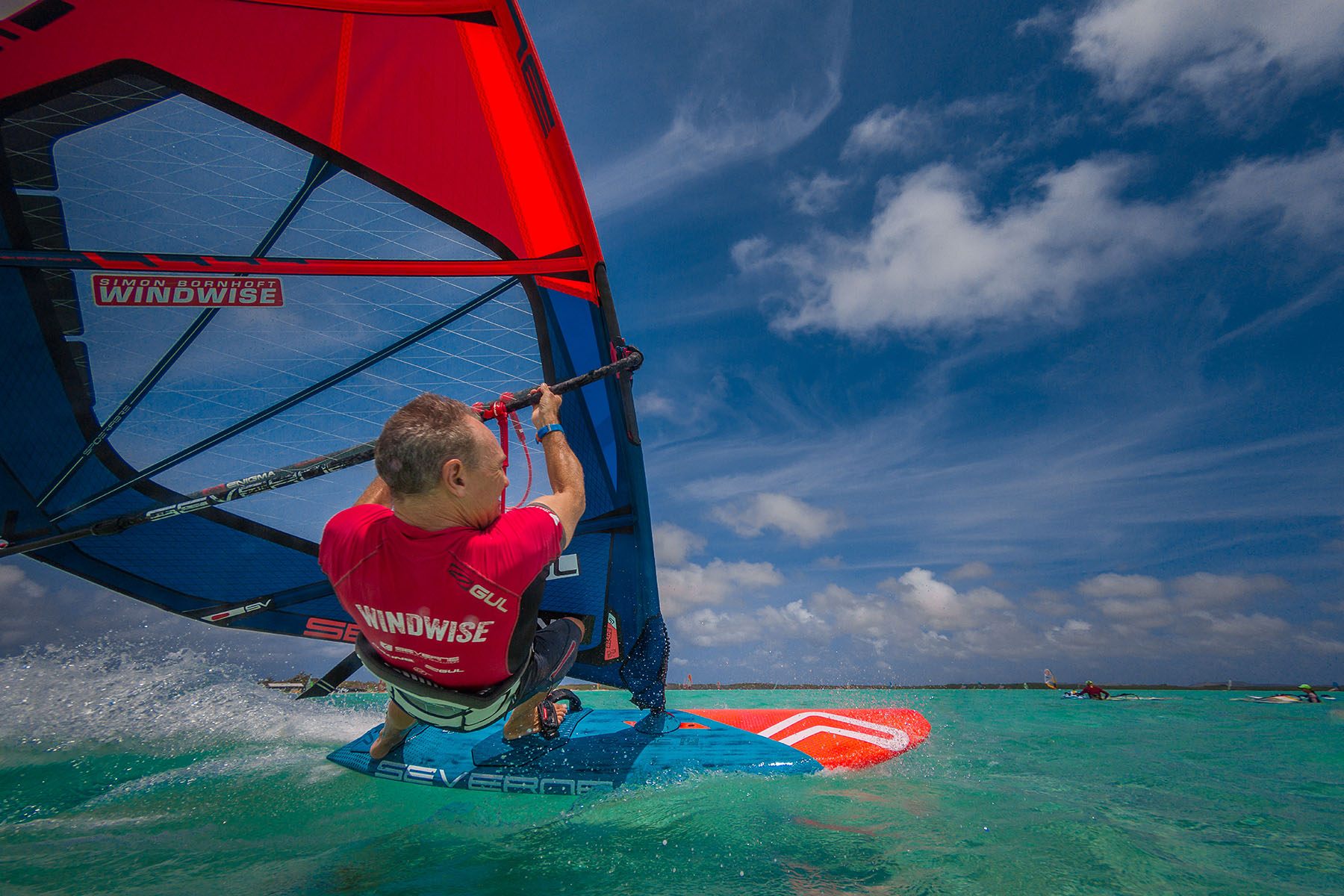
Why Do I Spin Out?
Firstly, congratulations, you’re going fast! Secondly, spin out is down to excessive pressure on the rear leg compared to the fin size. So keep that rear leg flexed, especially over chop. If you do ‘spin out’, you can recover by standing up a bit and sheeting out slightly before “snapping” the tail in underneath you by pulling the rear foot towards you to re-engage the fin. If it happens consistently, try a larger fin(s), more downhaul and increase front foot pressure as much as possible.
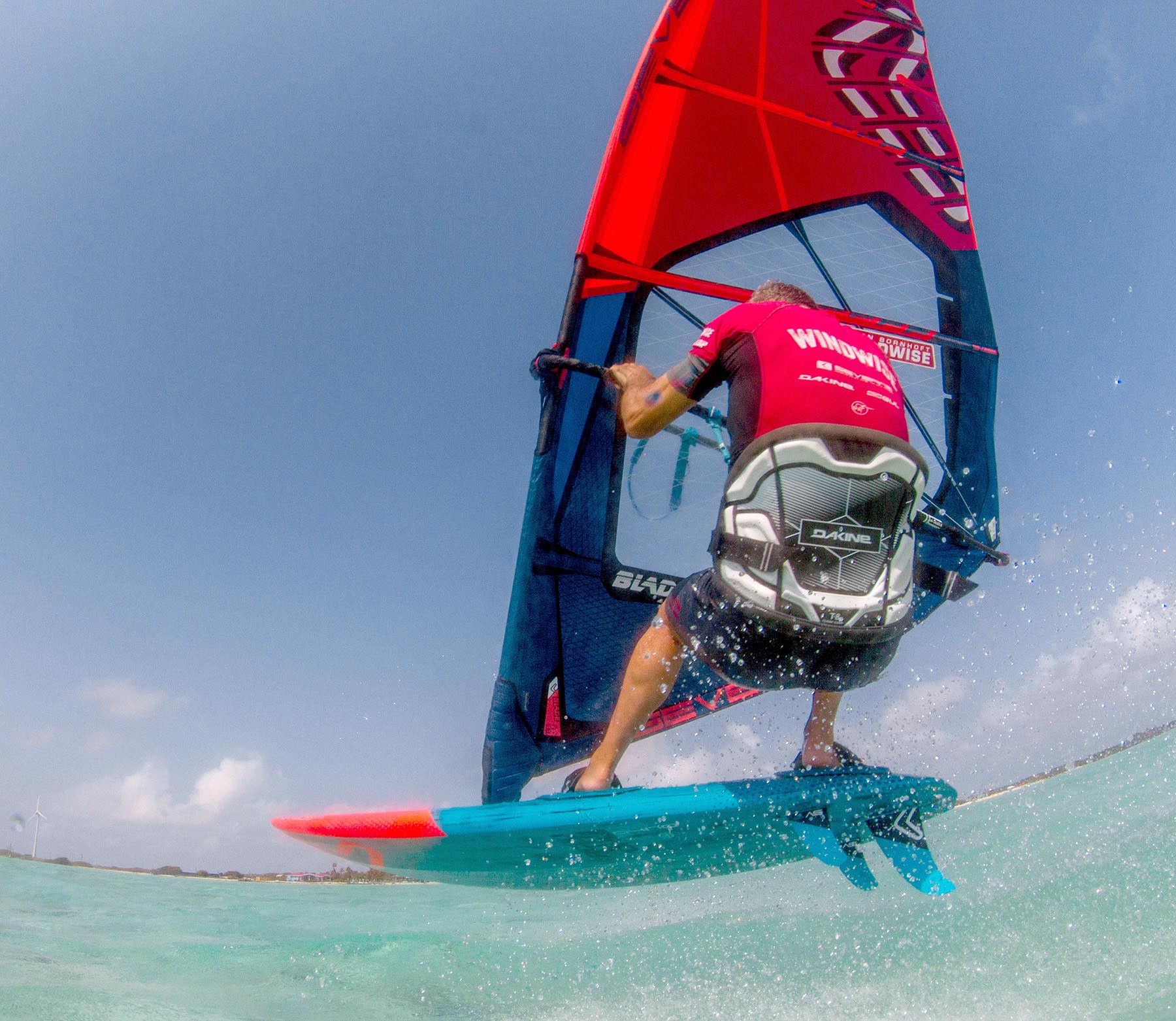
How to cope with the chop
When screaming over flat water, a slight flex in the rear leg will act as a sufficient shock absorber. If you hit a large peak of nasty chop, breaking white water or feel you’re getting unwanted air, momentarily flex both legs to absorb any lift and tuck in that rear leg, then quickly resume a Sunken 7 stance.
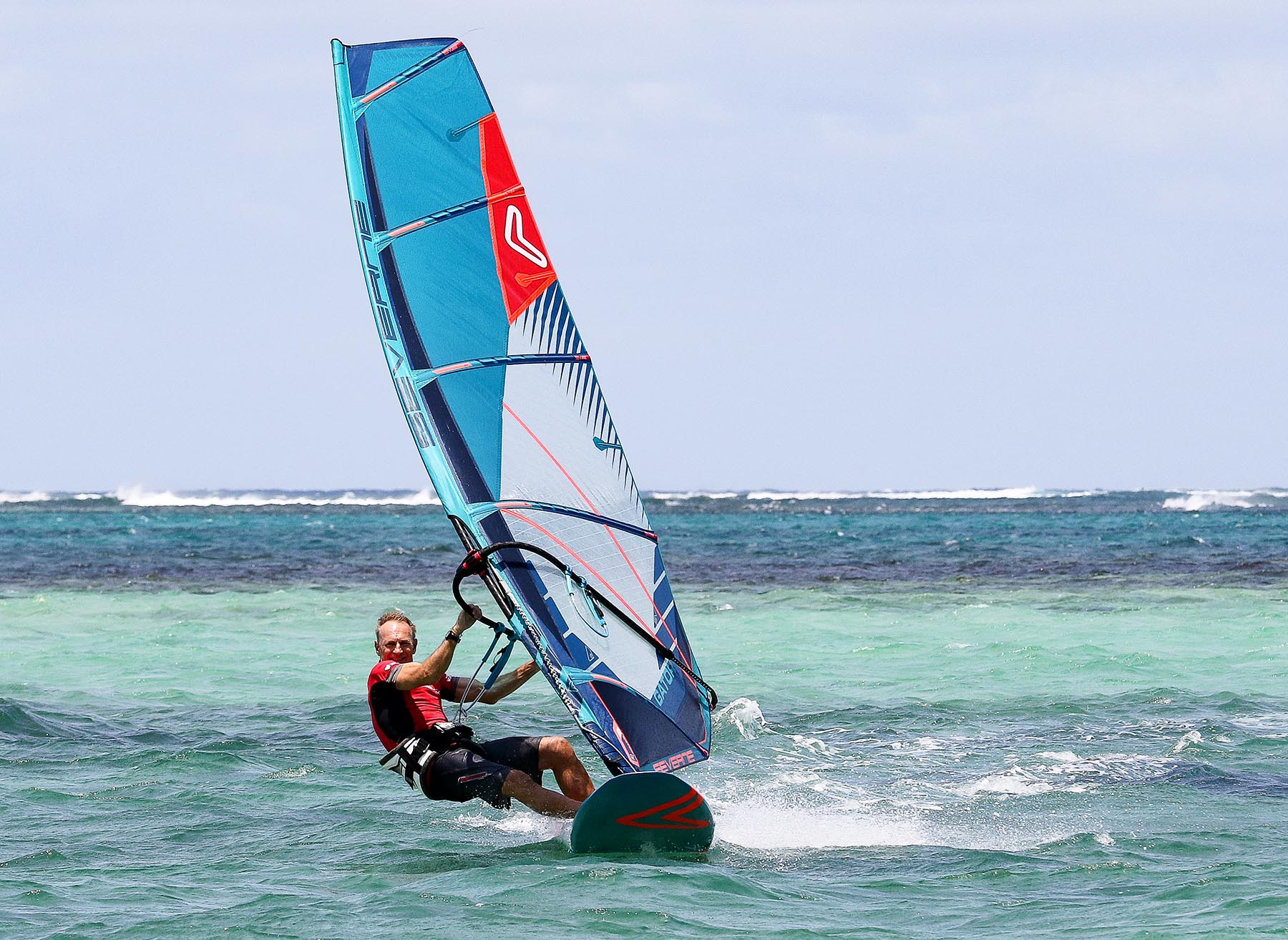
Going broad fast. Rig Forward – Body Back
Fast can be fun, when you have the confidence to bear away. So to control being maxed out heading downwind, like maybe setting up for a gybe or hitting that GPS target, massively sink, hunch and lock that 7 DOWN! Marginally widen the hand spread, especially when gybing, then super accentuate pulling down on the boom through the harness, rolling and hunching the upper body and crucially being softer and more flexed on the rear leg than the front leg. If a gust hits, bear away more, you’ll be surprised how you can learn to control massive acceleration this way.
So you now have a few skills to accentuate when the wind is really up and you want to get the most out of your own technique and hopefully getting the most out of a Dyno, Fox, Psycho or Nano!
Get Some Windwise Coaching & Try Severne gear!
If you want to maximize your level, get the most out of your time on the water and try some Severne kit join us on our Windwise 2020 Technique Tour @ www.windwise.net.
Any Questions or Requests
If you want some personal advice on your how to improve your performance and get the most out of your Dyno or any other Severne kit, then ask Simon Bornhoft info@windwise.net.
More Dyno guides with Simon Bornhoft / Windwise
DYNO BOARD SETUP WITH SIMON BORNHOFT PART 19 – HOW TO PREPARE FOR WAVES PART 4
Push it, drive it and accentuate! When conditions are tricky or you’re new to a wave environment, it’s important to stick to a plan and ‘try’ to massively exaggerate everything, no matter what you’re faced with. So, what better than to check out some real examples of Severne rider and Windwise coach Simon Bornhoft’s clients riding the Dyno and putting into practice some of the skills we’ve covered in our recent wave series.
DYNO BOARD SETUP WITH SIMON BORNHOFT PART 18 – HOW TO PREPARE FOR WAVES PART 3
Have you been inspired by the recent PWA Pozo Wave event? Well, here’s what YOU can do to get yourself into waves. Simon Bornhoft continues his Windwise series on how to fully develop your windsurfing skills, maximize your time on the Severne Dyno and, for this issue, continue your mission in the waves. So whether you’re new to freewave/wave windsurfing or polishing up your existing wave skills, this will give you a focus and purpose for your next sessions.
Dyno board setup with Simon Bornhoft part 17 – How to prepare for waves part 2
Severne Team Rider and International coach Simon Bornhoft continues his Windwise series on how best to develop your windsurfing skills. In this part, Simon goes deeper into how to prepare for your next wave session, even though you might not have access to waves.
DYNO BOARD SETUP WITH SIMON BORNHOFT PART 16 – HOW TO PREPARE FOR WAVES
Severne Team Rider and International coach Simon Bornhoft has helped thousands of recreational sailors to get into or improve their wave sailing skills on his Windwise courses. So if you’re on the cusp of venturing into any wave environment here are some skills that can be learnt on flat water and transferred into the rough stuff. Follow these wise words to increase your enjoyment and success rate in 2022!
Everything you need to know about your harness lines – hang In There Part 3 Wave & Freestyle
Windwise coach and Severne Team Rider, Simon Bornhoft, continues his ‘Hang In There’ harness line series looking at different disciplines and sailing styles. For this issue, we shift the focus and harness line positions for the Freewave, Wave & Freestyle playgrounds. So whether you’re a weekend wave warrior or looking to fine tune like a pro, wise up and read on.
Everything you need to know about your harness lines – Hang In There Part 2 Slalom & Freeride
Windwise coach and Severne Team Rider, Simon Bornhoft, continues his quest to help you get the most out of your precious time on the water and your kit. For this feature we continue our ‘Hang In There’ harness line series, looking at different disciplines and styles in windsurfing and draw on the speedy talents of Team Severne top riders.
DYNO BOARD SETUP WITH SIMON BORNHOFT PART 15 – Going shorter
Whether you’re moving into planing conditions for the first time or moving down in board volume, Simon Bornhoft offers some wise words on how to make smaller beautiful.
Dyno board setup with SImon Bornhoft part 14 – carving downwind 360
For this issue, we get into some serious carving with a downwind 360. Just trying them is a great way to improve your gybing ability, board handling and feel that Dyno carving sensation.
Dyno board setup with Simon Bornhoft part 13 – Gybe variations
Severne rider and coach Simon Bornhoft helps you expand your gybing range with a classic ‘Strap-to-Strap’ wave style gybe to make you and your Severne Dyno board feel like wave masters.
Dyno board setup with Simon Bornhoft Part 12 – a different approach
Simon Bornhoft looks at how to massively increase your gybing success rate when even just the thought of bearing away sends you and your kit into a total tail spin!

